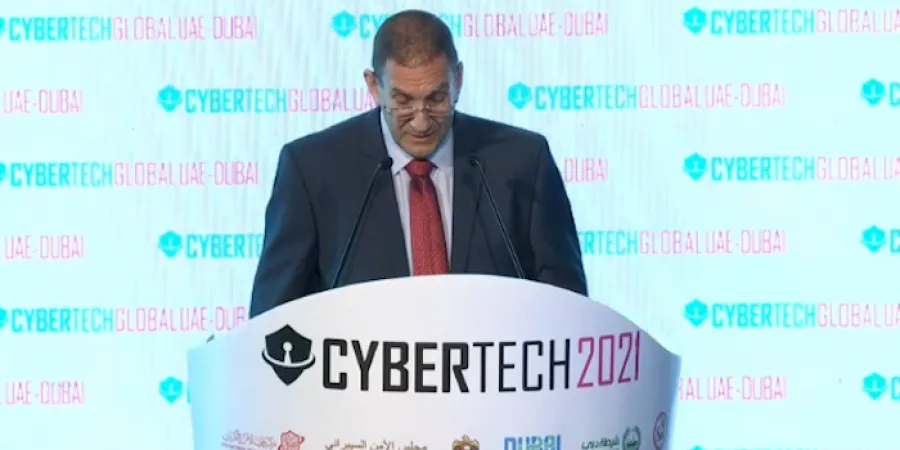The next cyber challenge: 'internet of electricity'
Yiftah Ron-Tal, Chairman of the Israel Electric Corporation, describes the vision of a global decentralized electricity network in which every consumer produces energy and sells the surplus via virtual currency. A special report from Cybertech Dubai
Ami Rojkes Dombe
| 06/04/2021
Yiftah Ron-Tal, Chairman of the Israel Electric Corporation, claims at the Cybertech Dubai conference that the future of the energy field lies in a decentralized electricity network that includes generation and storage of energy, as well as the sale of the surplus. In less than 20 years, "each of us will generate energy for his own needs, store this energy, and sell the surplus back to the electricity network and to nearby consumers. Simultaneously, each of us will become both an electricity producer and consumer," said Ron-Tal.
"Eighty percent of the energy resources will be decentralized by 2040," he said. "Energy generation resources based on renewable and green energy - sun, wind and water – is becoming much more effective. At the same time, systems for energy storage will also become more effective, and at a cost that is steadily decreasing. These trends indicate that we are advancing toward a world with almost unlimited energy."
Ron-Tal also predicted an "internet of electricity" that will be based on technologies such as blockchain, with digital coin that will be used for electricity (the "Wattcoin", in Ron-Tal's opinion). "A worldwide electricity network that will connect all continents and countries in order to guarantee effective transport of global green energy and ensure reliable energy supply for every person on earth," said Ron-Tal.
However, "every technological system can be hacked and is vulnerable to cyberattacks, especially when everyone will be connected. Just imagine the cyber threats and possibilities for cyberattacks in the decentralized energy revolution." Ron-Tal said the Israel Energy Corporation recently established the "SOPHIC" system, which provides a current picture of the millions of attempted attacks against the operating systems.
"Whenever possible, organizations look to implement quick-win security defense technology, trying to maximize their ability to prevent, detect, and respond to cybersecurity threats. This principle has proved insufficient or even failed. In fact, technology is just not enough. A second vector is procedures and policy. This vector is based on flexible and continuous cyber-by-design mechanism and must be updated after COVID-19 changed the digital infrastructure concept all over the world. The third vector, the biggest challenge, is the employees' level of knowledge," he said, adding that today, as organizations become more decentralized, employees are transitioning to remote work, a reality requiring investment in all three vectors - technology, procedures and human capital.
Yiftah Ron-Tal, Chairman of the Israel Electric Corporation, describes the vision of a global decentralized electricity network in which every consumer produces energy and sells the surplus via virtual currency. A special report from Cybertech Dubai
Yiftah Ron-Tal, Chairman of the Israel Electric Corporation, claims at the Cybertech Dubai conference that the future of the energy field lies in a decentralized electricity network that includes generation and storage of energy, as well as the sale of the surplus. In less than 20 years, "each of us will generate energy for his own needs, store this energy, and sell the surplus back to the electricity network and to nearby consumers. Simultaneously, each of us will become both an electricity producer and consumer," said Ron-Tal.
"Eighty percent of the energy resources will be decentralized by 2040," he said. "Energy generation resources based on renewable and green energy - sun, wind and water – is becoming much more effective. At the same time, systems for energy storage will also become more effective, and at a cost that is steadily decreasing. These trends indicate that we are advancing toward a world with almost unlimited energy."
Ron-Tal also predicted an "internet of electricity" that will be based on technologies such as blockchain, with digital coin that will be used for electricity (the "Wattcoin", in Ron-Tal's opinion). "A worldwide electricity network that will connect all continents and countries in order to guarantee effective transport of global green energy and ensure reliable energy supply for every person on earth," said Ron-Tal.
However, "every technological system can be hacked and is vulnerable to cyberattacks, especially when everyone will be connected. Just imagine the cyber threats and possibilities for cyberattacks in the decentralized energy revolution." Ron-Tal said the Israel Energy Corporation recently established the "SOPHIC" system, which provides a current picture of the millions of attempted attacks against the operating systems.
"Whenever possible, organizations look to implement quick-win security defense technology, trying to maximize their ability to prevent, detect, and respond to cybersecurity threats. This principle has proved insufficient or even failed. In fact, technology is just not enough. A second vector is procedures and policy. This vector is based on flexible and continuous cyber-by-design mechanism and must be updated after COVID-19 changed the digital infrastructure concept all over the world. The third vector, the biggest challenge, is the employees' level of knowledge," he said, adding that today, as organizations become more decentralized, employees are transitioning to remote work, a reality requiring investment in all three vectors - technology, procedures and human capital.



